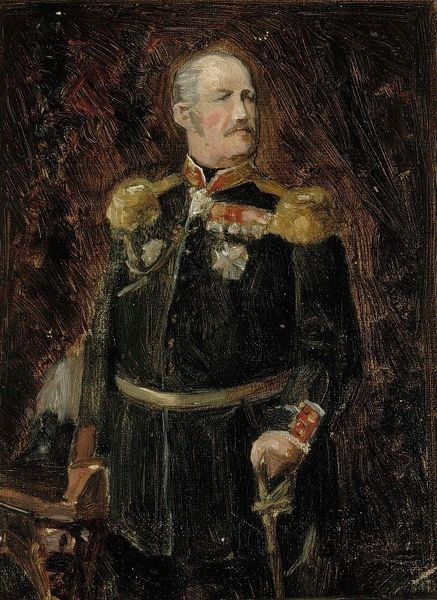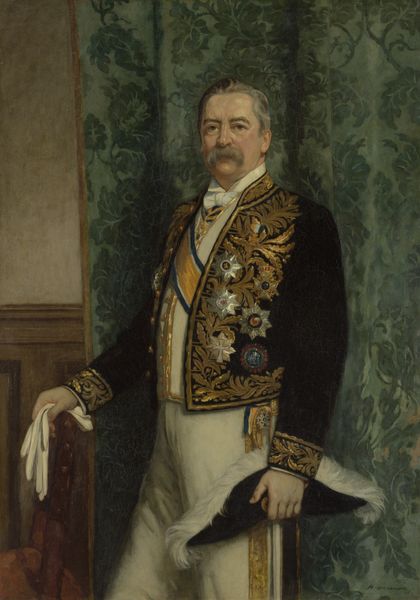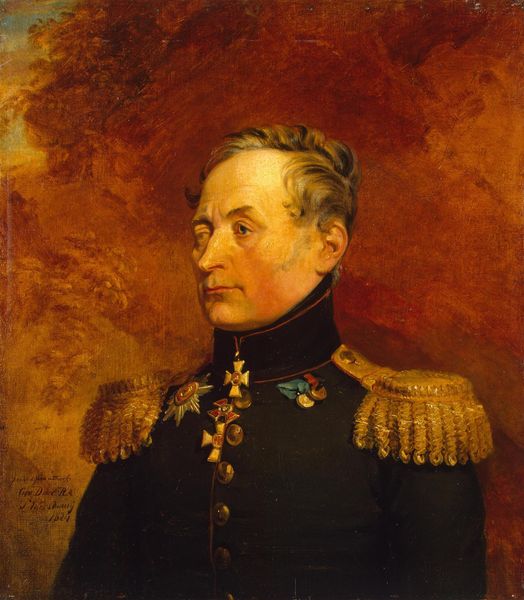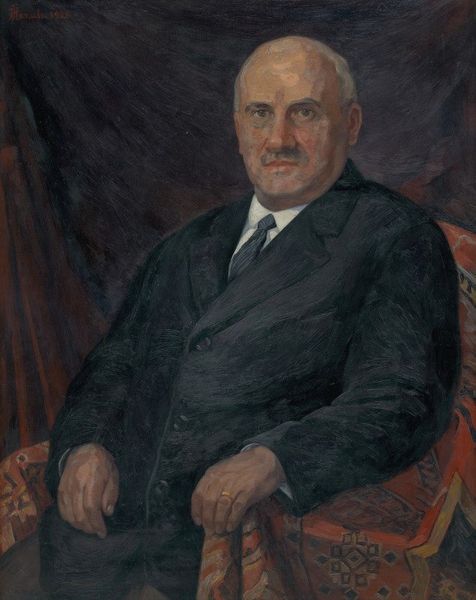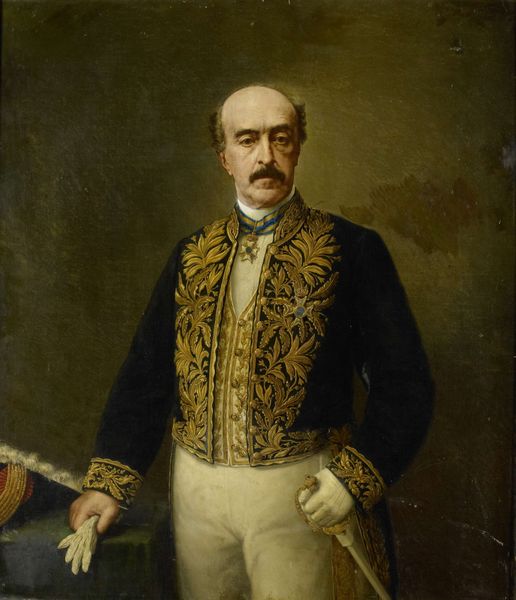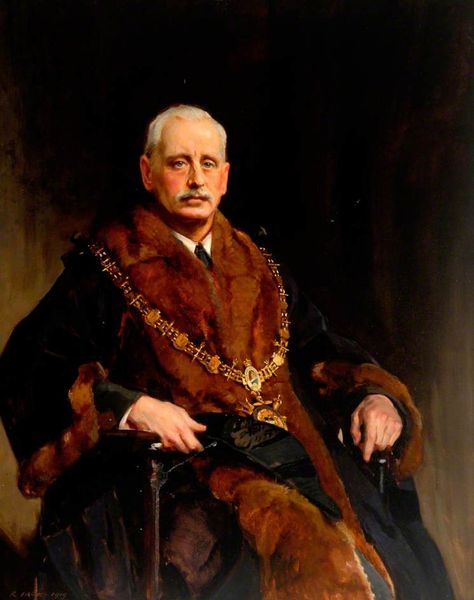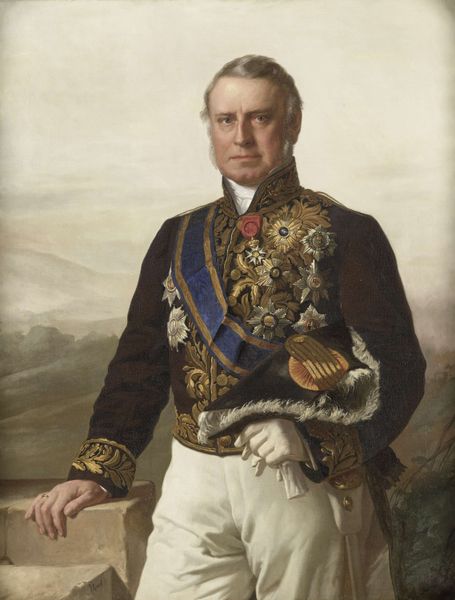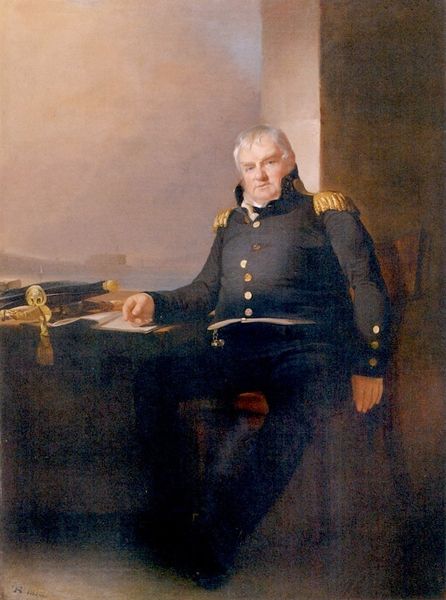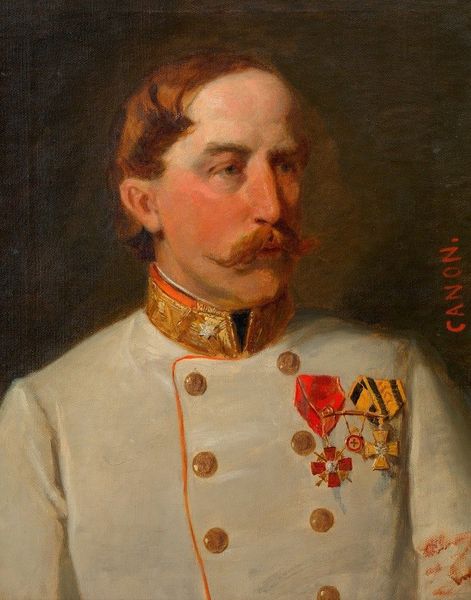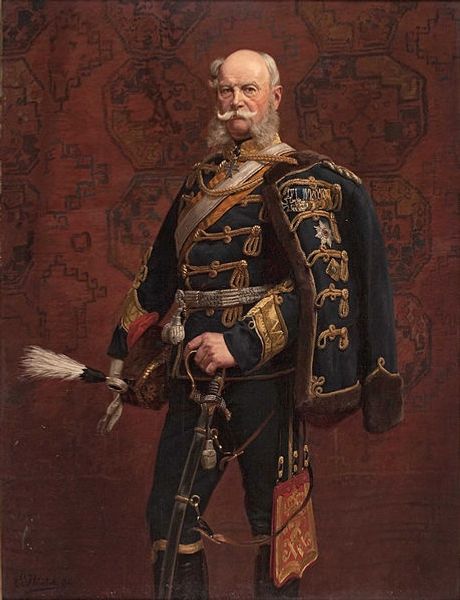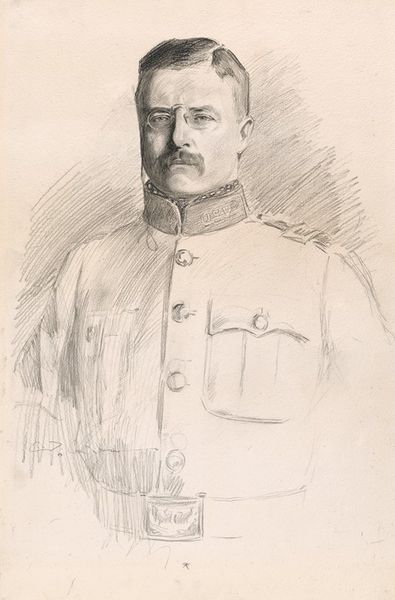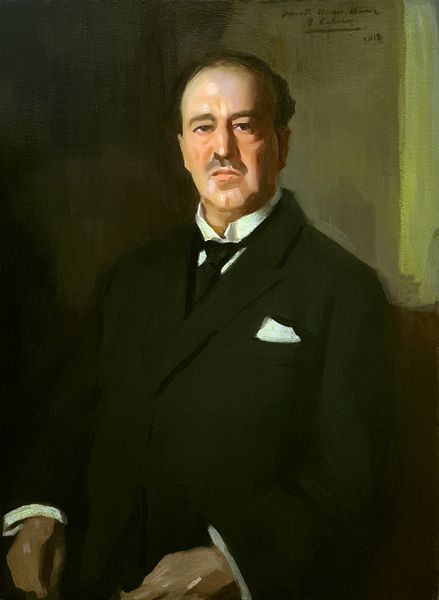
Copyright: Public Domain: Artvee
Franz von Lenbach painted this portrait of Otto Fürst von Bismarck, likely in 1894, using oil paint on canvas. The materiality of oil paint gives a depth and richness to the sitter's presence. Lenbach’s technique involves layering thin glazes of paint, which creates a luminous effect and allows light to penetrate and reflect off the canvas. The visible brushstrokes add texture and dimensionality, especially apparent in the rendering of Bismarck's face and uniform. The artist's skilled manipulation of light and shadow enhances the subject's features, conveying Bismarck’s gravitas and authority. The choice of oil paint is significant because it was traditionally associated with fine art, used for portraits of significant figures, while other materials were relegated to craft or decorative arts. By employing this method, Lenbach elevates his subject. Examining the materials, making, and context enables us to understand the rich cultural significance of this artwork.
Comments
No comments
Be the first to comment and join the conversation on the ultimate creative platform.
